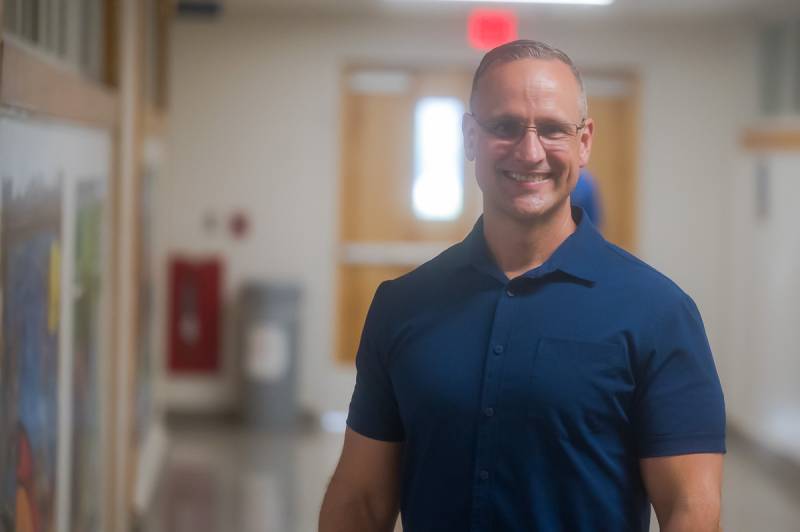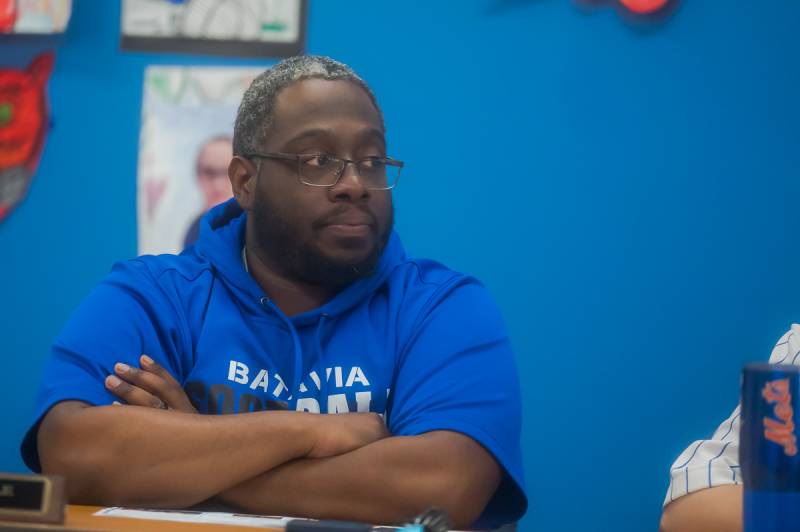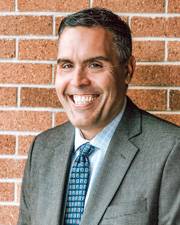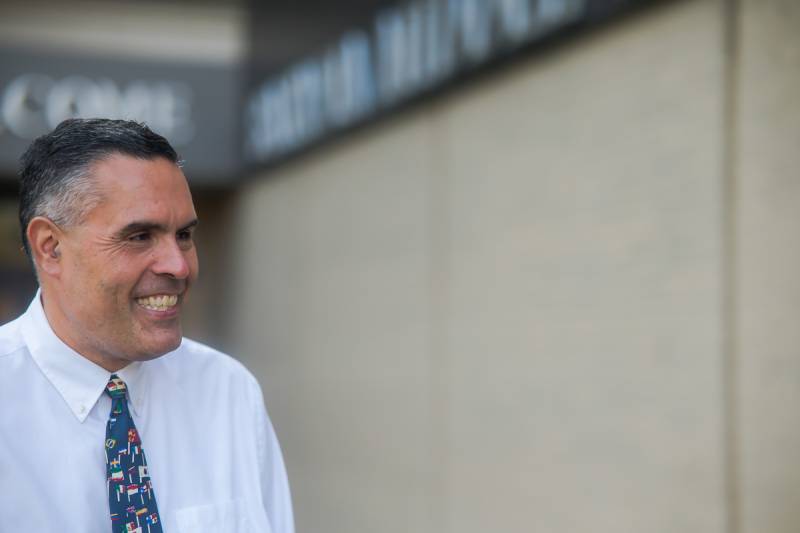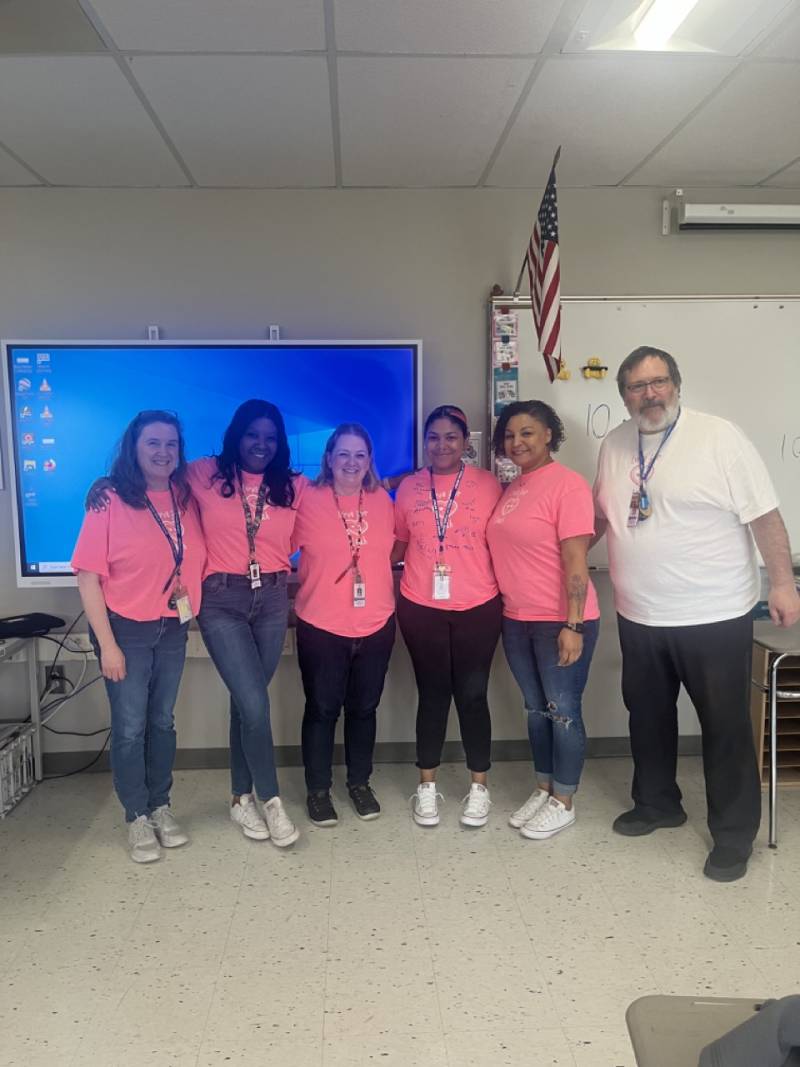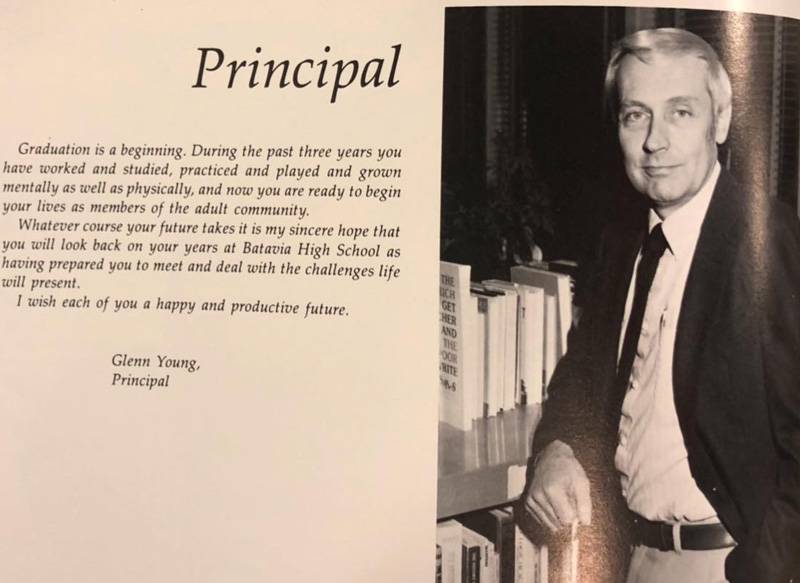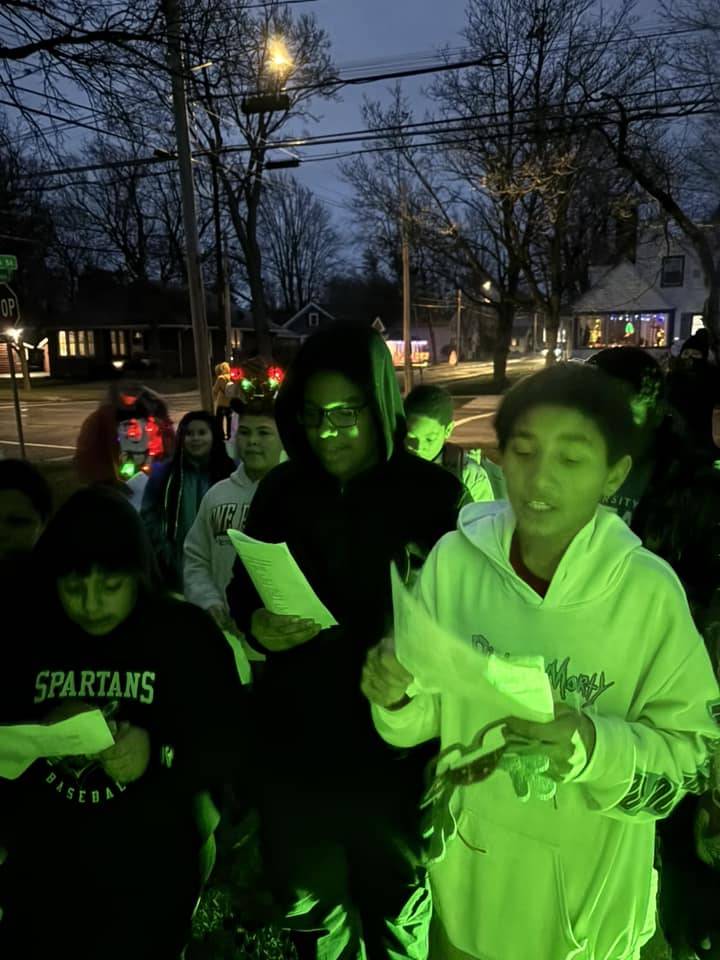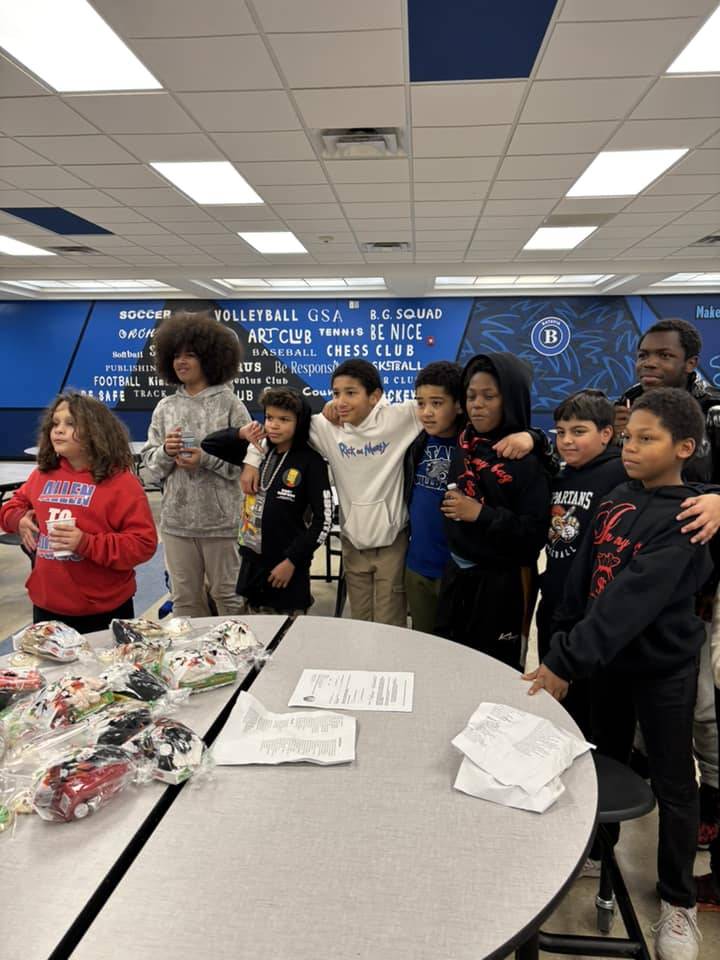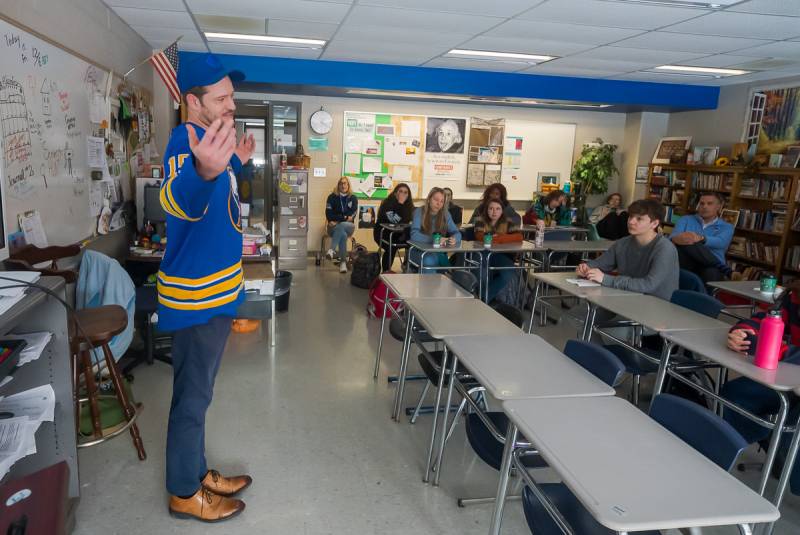Batavia's first-time Special Olympics is 'so much fun' for 100 student athletes

Photo by Joanne Beck
Cameron, a student from Greece attending the New York State School for the Blind, was happy to be exercising early Thursday morning — an activity he’s actually been preparing for twice a week the last several months, he says.
“Every Monday and Wednesday at the gym we’ve been practicing,” the young athlete said during this area’s inaugural Special Olympics at Van Detta Stadium in Batavia. “This Olympics is so much fun, probably just watching everyone do these special events. Next I’m in the running long jump.”
He was eager to point out his mom, Cristina Vergne, and 8-year-old brother Killian watching from the stadium seats. It could have been better weather, mom said, as the sun was just beginning to peek out from heavy clouds a few hours into the event, but she enjoyed watching the action.
After all, the Special Olympics have been on Cameron’s mind for quite some time now, she said.
“We’ve been talking about it for months. He’s very excited,” she said. “I think it’s awesome. I think seeing all the kids be here and able to participate is a great thing.”
Fellow School for the Blind student Susanna, from Franklinville, had cheerleaders in the audience as well, she said.
“My mom and dad are over there,” she said, pointing to the group of spectators. “I had a 100-meter dash and a relay race. I would like to do it again.”
The School for the Blind, Genesee Valley BOCES and Batavia City School District joined forces to put on this first-time event.
“We currently have about 100 athletes that are participating today in various field events from our school. So we have parents in the stands, and we have all our staff here ready to provide support where needed,” School for the Blind Superintendent Jackie Simpson said. “We also have the Batavia City School District National Honor Society students who are here helping with awards and helping with many of the events, they helped us set up this morning, and we will see health careers academy class, we called our hike team, so they're here to cheer kids out, and they're also participating in some of the races with the students.
"It is the first time that the School for the Blind has participated in these Special Olympics since the mid 80s. So it was about 40 years in coming. I started with the school district about four years ago, in July 2021 and said, I think we need to have a Special Olympics team here."
Why was it important to you to see this come to fruition?
mid-80s"It's funny, a staff member who used to work for the school actually reminded me this morning, when I met him four years ago, that one of the things I said to him is that if it's something kids can do, we're going to make sure they do it," she said. "And it just seemed important to me and for our school to have students experience something that is just so out of the norm of their typical day, to have that feeling of competition and being cheered on for and really working and practicing.
"They've been doing time trials since January, February, and practicing the events to get ready for this day," she said. "So we just felt it was a great opportunity, not only for our school, but to bring the community together, to have everyone here on this day.”
From a city police escort in the morning and a Special Olympics Planning Committee comprising staff from all three schools, to food service, maintenance, and nurses with a tent set up just in case there’s a need, “it just ended up being all hands on deck through our different departments,” she said. Organizers plan to include more schools in future years.
Not only did Batavia Middle School sixth-grader Logan run his own events — the 100-meter dash, relay race and long jump — he also helped cheer on a friend with his 50-meter run from the sidelines, he said.
Logan’s favorite part of the day so far was the relay, he said, explaining why.
“I handed the purple thing to my friend Chase, and running,” he said.
He liked being able to work as a team, he said, which seemed to be a theme for students and staff alike. This event was a “huge collaborative effort” between the School for the Blind, BOCES and city schools, Director of Special Education Kellie Marciano said.
“We had regular meetings throughout the year to really prep and prepare for it. The Special Olympics has been a huge part of helping us. Unfortunately, they're not here today, because we have another one happening in the southern region, which is fine, but the kids have been so hyped up for the last couple of months,” Marciano said. “For it, the teachers have been prepping them, getting them ready to practice. And then, I mean, today's going amazing. The kids are doing really, really well for our first time. I think it's really going well for everybody.”
Chase, a Batavia middle school seventh-grader, experienced the thrill of perseverance, albeit a bit of embarrassment at first, he admitted, followed by victory in the 100-meter dash.
“I was trying to see, because my shoe slipped off before I started. So it was when I was running, I had my shoe missing, I was like, that’s strange. And then I finished over there, over here. I finished everywhere,” he said, sharing how he felt afterward. “Good. Yeah, definitely I do (want to do it again).”
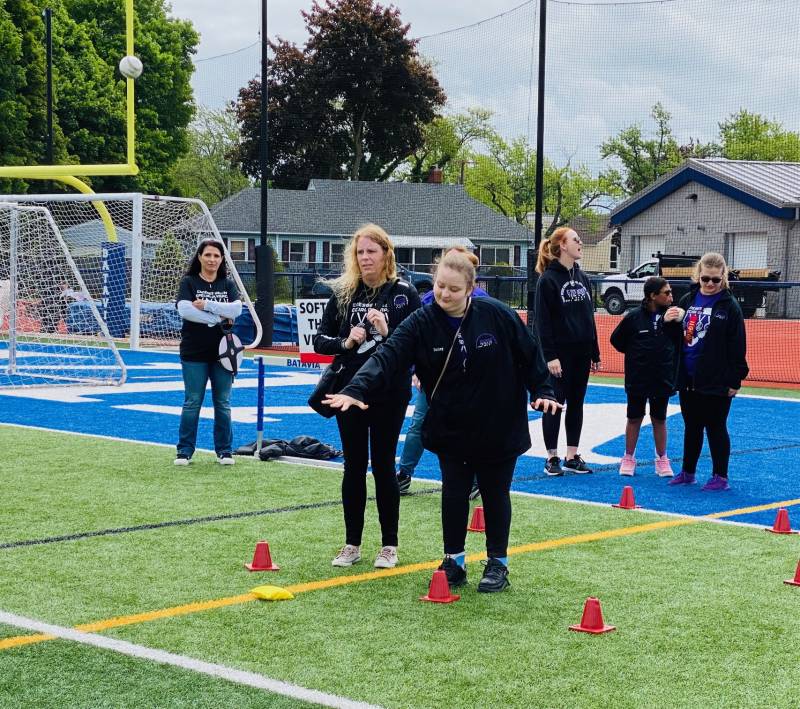
Photo by Joanne Beck
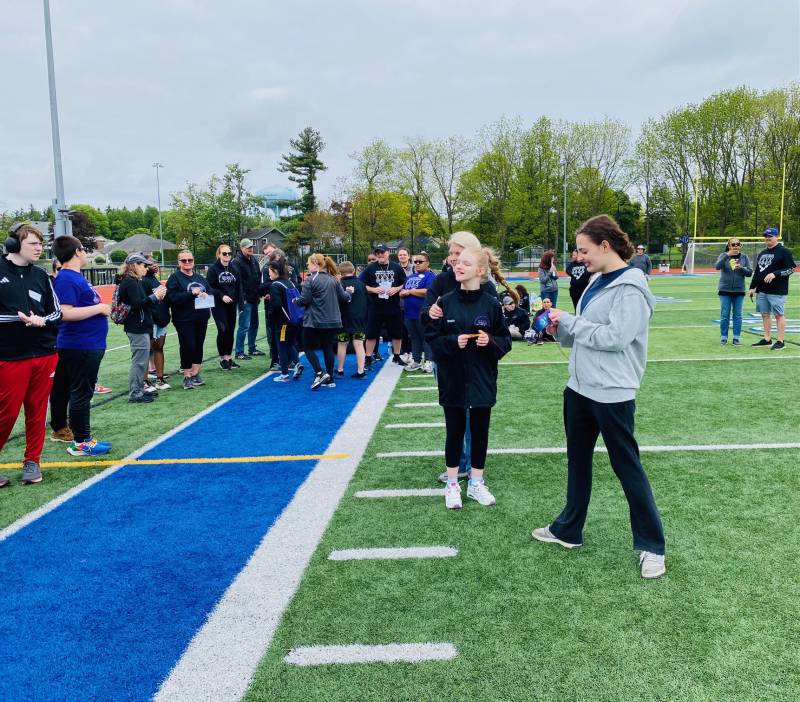
Photo by Joanne Beck
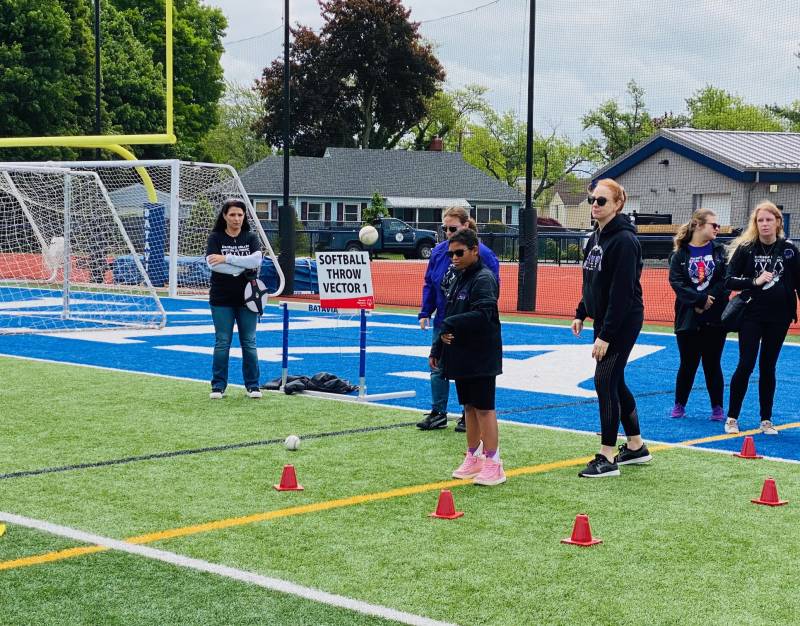
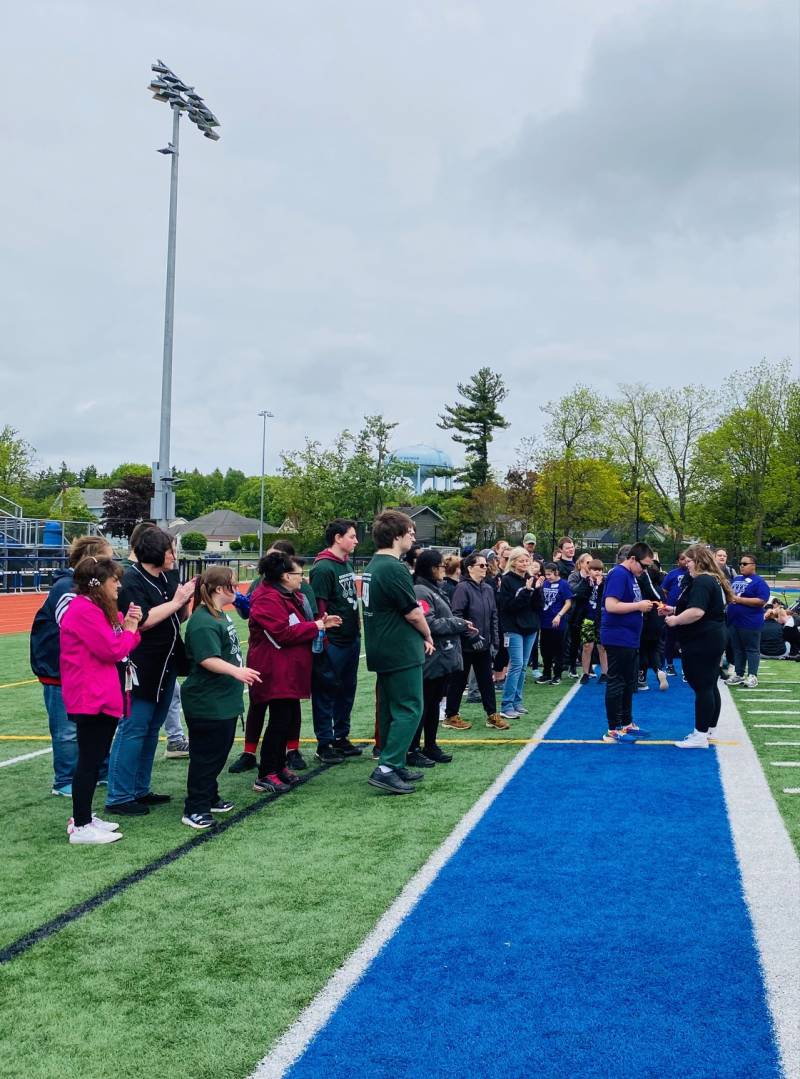
Photo by Joanne Beck
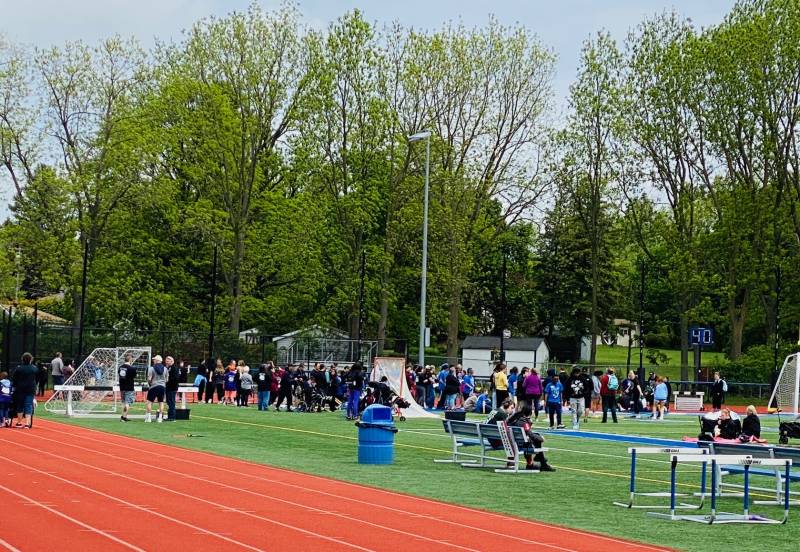
Photo by Joanne Beck

